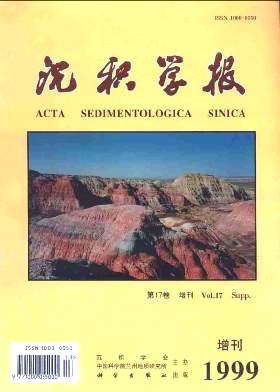The Feature and Deposit Model of Lacustrine Carbonate Rocks Formed in the Course of Soda Lake Evolution
- Received Date: 1999-06-23
- Publish Date: 1999-12-10
-
Key words:
- soda lake-type /
- lacustrine carbonate rocks /
- depasitional model
Abstract: Being one of the most important oil source rock in Biyang depression,the lacustrine carbonate rock is,here,mainly composed of dolomite,representing the characteristics of lacustrine carbonate rocks formed in the course of soda lake evolution Under the hot and semi-arid paleoclimate,the upper and lower part of the lower Tertiary are coarse elastic rocks which formed fluvial and Lacustrine fades in interval. The middle part Hetaoyuan Formation consists mainly of lacustrine muddy shale,carbonate and alkaline rocks except fan delta and delta deposits. The depositional model of lacustrine carbonate rocks evoluted to the soda lake:(1)The fan delta fades and delta fades are distributed along the south and north margin of the depression respectively,for the abundant supplement of elastics and low salinity(3‰-6‰)are generally not favorable for the formation of carbonate deposition,only forming lots of authigenic calcite and little authigenic dolomite minerals dispersing in mudstone and sandstone or the cements of sandstones. Particularly,in delta fades during flood-interval period or in interchannel deposits,the authigenic ferrodolomite and lime mudstone sheet increases with some lime mud shell oolites,intraclast sandstone and cryptoalgal laminated rocks intercalation deposited;(2)The salinity of lake water in Lake-shore and lake-bay facies,especially in the latter is high,the authigenic calcites and lime mudstone,ferrodolostone are widespread,in these fades,meanwhile,true ooid-and superficial ooid-bearing grain carbonate rock increases as well;(3)Carbonate rocks in shallow Lake facies are well developed,and the total thickness of carbonate rocks is about 300-600 m. The lithology are mainly grey-black,brown-grey dolomite mudstone,ferrodolostone and ooid-intraclast-bearing dolomite mudstone except alkaline-bearing lumps and lime mudstone deposition in the near-shore shollow lake fades;(4)Deeper lake facies,excluding turbidite deposition,are short of supplement of fresh water and elastics in deeper water depth and stable depositional environment. The salinity of lake water is high. Dolomite mudstone deposition is the thickest and about 700-900 m. The lithology are mainly black,grey-black dolomite mudstone,ferrod-lostone and dolomitic muddy shale lamllar interbedded. These are the typical characteristics of lacustrine carbonate-type oil source rock. Nowadays,the oil field has been found here;(5)The salinity of alkaline lake facies is very high (30‰-60‰),all kinds of carbonate rock,especially lime mudstone and ferrocalcite rock,are well developed and lamellar interbedded with alkaline layers and elastic rocks. Carbonate rocks formed excellent evaporite-bearing carbonate-type oil source rock.
| Citation: | HUANG Xing-zhen, YAN Chun-feng, WANG Sui-ji, SHAO Hong-shun, TUO Jin-cai, WANG Shou-qing, HE Zhu-rong. The Feature and Deposit Model of Lacustrine Carbonate Rocks Formed in the Course of Soda Lake Evolution[J]. Acta Sedimentologica Sinica, 1999, 17(S1): 728-733. |






 DownLoad:
DownLoad: